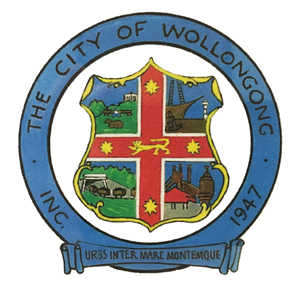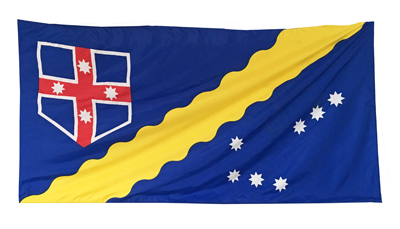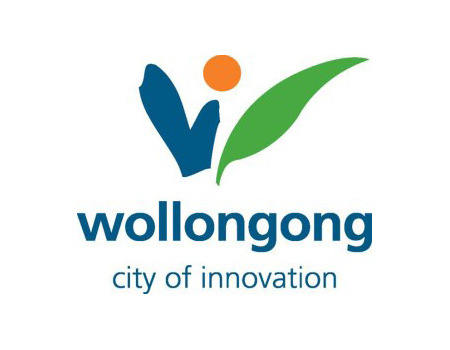The area we know today as Wollongong was originally inhabited by the Dharawal people (also spelled Tarawal or Thuruwal). The Traditional Custodians live and care for Country here in the Illawarra, as they have done for thousands of years. See our Aboriginal Culture and Communities pages for more information.
The name Wollongong is said to originate from the Aboriginal word woolyungah, meaning five islands.
In 1815 some of the Illawarra’s Traditional Custodians led the first European settlers and their cattle down the escarpment. This marked a new chapter in the story of our area.
Our current local government area was established on 12 September 1947. It was originally called The City of Greater Wollongong, formed by the joining of the smaller councils of Wollongong, Central Illawarra, Bulli and Northern Illawarra. The first Mayor of our current local government area was Alderman Harry Graham.
In 1970, Queen Elizabeth II granted the title of Lord Mayor to the city, and our current name ‘City of Wollongong’ was adopted.
The knowledge and dreaming stories of our Traditional Custodians has been layered with a more recent history of timber-getting, farming, mining, industry, tourism and building. All this has occurred in the setting of our beautiful beaches and the magnificent escarpment.
Wollongong City Libraries
Our libraries are a great resource if you want to learn more about local history:
- The local studies collection at our Central Library has plenty of information about our region’s past, including images, manuscripts, books, reports, and more. Our Local Studies staff can also help you with your research.
- Illawarra Images is an online database with thousands of photos from the mid 1800s to the present day. To find images, search the catalogue, and select 'Illawarra Images' as your search type.
- Wollongong Suburb Profiles have been prepared by library staff and local history experts.
Thematic History of Wollongong
Our Thematic History of the City of Wollongong PDF, 6493.3 KB report was prepared in 2010 as part of the Wollongong Heritage Study review. It gives a general overview of the history of our city.
Heritage Trail
Take a walk around our City Centre with the Wollongong Heritage Trail PDF, 7834.22 KB
Virtual Museum
Illawarra Remembers
- Illawarra Remembers is a site dedicated to local men and women who served our country in World War I.
Aerial Maps
Our aerial maps let you compare aerial photos of Wollongong from the 1940s to recent times.
- Wollongong Spyglass 1948-51 to 2014 lets you compare mid-20th Century Wollongong with recent aerial images
- Wollongong Spyglass 1977 to 2014 shows how our city changed over several decades.
- Our Wollongong Urban Morphology 1948 to 2018 map includes images from 1948-51, 1961, 1977-78 and 2018.
The NSW Office of Environment and Heritage has a searchable database of heritage items and current interim heritage orders.

Our city’s crest was designed in 1948. Its motto ‘Urbs inter mare montemque’ is Latin for ‘City between the mountains and the sea’.
The four quarters of the crest represent our traditional industries: farming, the port, coal mining and the steel industry.

A public competition to design a flag for our city was held in 1981. The winning design by John Mulhall of Cringila was adapted to create our flag.
The elements of our flag include:
- An adaption of our crest and the Coat of Arms of the State of New South Wales in the top left corner
- A dividing strip representing our golden coastline, which separates the blue of the sky and the ocean.
- Stars representing the constellation of Orion in the lower right segment.

Our logo is a stylised ‘W’, with colours chosen to represent our natural environment – the sun, sky, sea and mountain range.
Council works to preserve and celebrate our city’s heritage. Read more on our Heritage Work page.
- Events and Programs
- People
-
Art and Culture
- Aboriginal Culture and Communities
- Wollongong Art Gallery
- Illawarra Performing Arts Centre
- Public Art
- Creative Wollongong Studios
- Creative Dialogues
- The Arts Precinct
- Making Waves
- Creative Wollongong Short Film Competition and Festival
- Culture Mix
- Sculpture in the Garden Wollongong
- Recent Projects
- Opportunities for Artists and Performers
- Sister Cities
- History and Heritage
- Language Help
- Safety Programs
- Volunteering
- Community Transport
- Neighbourhood Groups
- Grant Programs
- Affordable Housing
- Awards and Recognition
